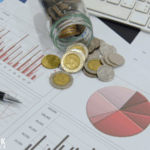The cryptocurrency landscape witnesses yet another dynamic shift as XRP, Ripple’s native token, carves a pivotal moment with its recent activities in the financial sphere. The emergence of XRP as a powerhouse for cross-border transactions has been cemented further with the push towards integrating it into the mainstream financial market. Yet, the path is filled with fluctuations and uncertainty, leaving investors to speculate about the potential directions XRP might take.
In earlier developments, the SEC had scrutinized XRP, alleging securities violations, which created a cloud of uncertainty around it for years. These charges halted some progress and innovation but also brought attention to regulatory frameworks for cryptocurrencies. Recent changes in regulatory policies, with specific approval on spot crypto ETFs, marked a turnaround, providing a legal foothold for XRP to bolster its position.
What Drives XRP’s Recent Surge?
The approval of the REX-Osprey XRP ETF by the SEC is a significant catalyst, launching on the CBOE BZX Exchange. This development not only helped XRP reach a notable price peak of $3.13 but also piqued interest across financial markets. The shift reflects broader acceptance and integration of cryptocurrency into standard trading paradigms.
XRP’s journey further aligns with the financial strategies adopted by major institutions such as Grayscale’s inclusion of XRP in its Digital Large Cap Fund. These movements signify institutional investors are recognizing the value and potential growth of XRP.
Can XRP Maintain Its Momentum Amid Challenges?
Reaching $3.50, considered a crucial threshold, poses questions whether it merely signals a temporary triumph or if it could herald further growth toward more ambitious targets. The market’s sentiments indicate uncertainty, as fluctuations are compounded by broader economic factors.
Several hindrances remain, especially the debate surrounding Ripple’s stablecoin initiatives, which some fear might overshadow XRP, compelling risk-averse investors to favor more stable options like RLUSD or even other major stablecoins.
Ripple, however, remains optimistic about the future, emphasizing the pivotal role XRP could continue to play.
XRP’s rapid settlement capabilities are crucial amid growing demands for efficient international payments.
Meanwhile, sentiments among financial analysts point to future gains.
The evolving narratives and technology integration of XRP remain central among digital currencies offering the potential for institutional integration.
A probable outlook reveals that XRP might indeed withstand these trials. Its foundational technology still holds considerable attractiveness, particularly in regions experiencing shifting financial needs. Investors should consider a cautious approach, ensuring that XRP constitutes only a minute portion of their portfolio, balancing potential upside with the ever-present risks associated with volatile markets.
With forthcoming regulatory clarifications and strategic management, XRP holds prospects of reigning not only as a cryptocurrency pioneer but also as a formidable asset in traditional finance portfolios.










